Styx: Master of Shadows – Review
by Mark R
|
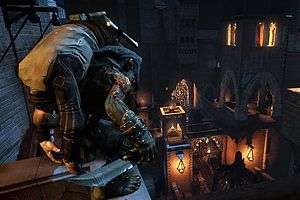 In a time long before respawning, games were actually pretty damned difficult. It wasn’t that the developers went out of their way to make things tough – along the lines of Demon’s Souls – it’s just that they knew how to make sure there was more of a challenge to the gameplay than the simple rinse/repeat cycle of ‘continue until death, then jump back a few steps and try again’ that seems to be commonplace these days. If anything, with the number of QTEs and health packs dotted around most in-game universes, it would appear that the underlying seam of present-day gaming is to make it as easy-going as possible. Thankfully, not all modern games follow suit.
In a time long before respawning, games were actually pretty damned difficult. It wasn’t that the developers went out of their way to make things tough – along the lines of Demon’s Souls – it’s just that they knew how to make sure there was more of a challenge to the gameplay than the simple rinse/repeat cycle of ‘continue until death, then jump back a few steps and try again’ that seems to be commonplace these days. If anything, with the number of QTEs and health packs dotted around most in-game universes, it would appear that the underlying seam of present-day gaming is to make it as easy-going as possible. Thankfully, not all modern games follow suit.
Even though its relatively low-polygon and oft-muddy textures would have you believe that it had been ripped from a time where Morrowind was still cutting-edge technology, Styx: Master of Shadows is very much a modern game in its approach, yet it retains that age-old difficulty curve. And by ‘curve’ I mean ‘ledge’ in that it carries that aforementioned label from the classic gaming era of ‘pretty damned difficult’.
You play as Styx, the shorter of the two protagonists from Cyanide’s 2012 role-playing game, Of Orcs and Men. As a prequel, Master of Shadows takes place long before any of the events in Of Orcs and Men were established, and centres around Styx’s fascination for the amber that flows from the heart of The World Tree, a huge organic life force which grows within Tower of Akenash. Being heavily guarded by both humans and elves, Styx’s self-appointed task to steal the heart of The World Tree was never going to be easy, and the story is played out through a series of recollections throughout an interrogation within a human prison.
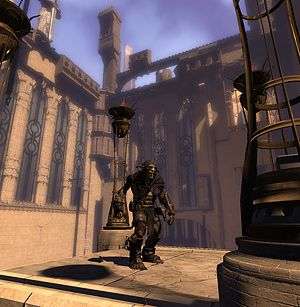 Stealth games live and die by how much freedom is afforded to the player, and the more linear titles tend to hold less water than those which allow for mass exploration and various takedown methods. Master of Shadows not only embraces this fact, it capitalises on it to the point where it’s possible to get through each and every level by both remaining undetected and being responsible for no deaths whatsoever. For those who prefer a certain degree of confrontation, the option is there to turn each level into a bloodbath and ensure that nobody is left alive, but the penalty for doing so is that you pick up no in-game challenge awards. To add insult to injury, if you’re out to max the achievements and pick up every collectible possible, you’re going to have to replay each level until you reach full stealth mode and get to the exit within a certain time frame. It is not easy and, despite replaying even the simplest chapter four times over, I haven’t yet managed to bring it in under the required eighteen minutes.
Stealth games live and die by how much freedom is afforded to the player, and the more linear titles tend to hold less water than those which allow for mass exploration and various takedown methods. Master of Shadows not only embraces this fact, it capitalises on it to the point where it’s possible to get through each and every level by both remaining undetected and being responsible for no deaths whatsoever. For those who prefer a certain degree of confrontation, the option is there to turn each level into a bloodbath and ensure that nobody is left alive, but the penalty for doing so is that you pick up no in-game challenge awards. To add insult to injury, if you’re out to max the achievements and pick up every collectible possible, you’re going to have to replay each level until you reach full stealth mode and get to the exit within a certain time frame. It is not easy and, despite replaying even the simplest chapter four times over, I haven’t yet managed to bring it in under the required eighteen minutes.
Therein lies the beauty of Styx; its difficulty is rivalled only by how much freedom you are given in which to circumvent the obstacles that line your path. Each level has a entry and exit point, and these are invariably at opposite ends of the environment, but there is no clear route from one to the other. Assuming Styx has consumed a phial of amber, it is possible to activate his ‘amber vision’ for clues as to which way to take but these are as fraught with danger as any other conceivable path, and they’ll rarely take you on the most interesting route anyway, so if excitement and tension are what you’re after then it’s best to take some time to surveil each location and strategise… and I don’t use that term lightly.
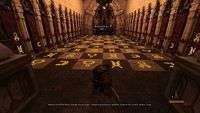 |
 |
 |
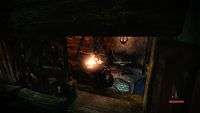 |
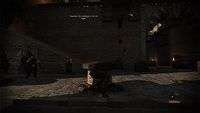 |
 |
One example of how open the environment is would be in one particular area where you can clearly see where you have to go for the first objective, but the obvious route is peppered with enemies. Were they banging away on an anvil or decanting grain from a sack to a bucket then they’d be a lot easier to sneak past undetected – or easier to take out if you prefer to engage in combat from time to time – but these particular enemies are all guards. They’re all treading their paths so tightly that it wouldn’t actually be possible to stealth-kill them one at a time, and the area is so highly populated that any assassination would result in another dozen guards down on top of you before you can say “Domo arigato”. After spending a little time checking out the area from a high vantage point, it became clear that there were at least six other ways to get to the desired location – some involved the typical duck-and-cover approach at ground level while others were a little more tricky and would require some serious climbing and jumping to reach near-hidden shafts within the walls of the buildings, all of which avoid the more densely populated areas but run the risk of dropping on top of a cluster of guards or, worse still, falling to your death.
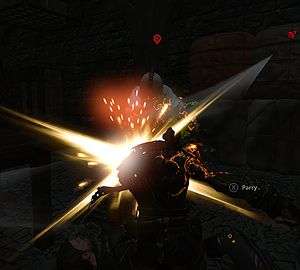 Should you find yourself in a position where guards become aware of your presence, it’s not possible to quickly slink back into the darkness and wait for them to pass. They’ve already seen you, so they’ll see where you go and will drag you out to face their wrath. It is here that the first, and only, sticking point came in the game – the combat. There isn’t actually any. Squaring up to an enemy will only give you the option to parry against their blows, each time wearing them down to the point where (usually after three or four successful parries) the opportunity arises for an outright kill which, sadly, means there’s no excitement in any face-off other than your often-failed attempt at flicking to a life potion in your inventory in order to stay alive long enough to win. After a dozen or so respawns it finally sunk in what was expected of me and most confrontations ended in a clean kill, but as the name of the game is stealth, it’s better to avoid enemies altogether.
Should you find yourself in a position where guards become aware of your presence, it’s not possible to quickly slink back into the darkness and wait for them to pass. They’ve already seen you, so they’ll see where you go and will drag you out to face their wrath. It is here that the first, and only, sticking point came in the game – the combat. There isn’t actually any. Squaring up to an enemy will only give you the option to parry against their blows, each time wearing them down to the point where (usually after three or four successful parries) the opportunity arises for an outright kill which, sadly, means there’s no excitement in any face-off other than your often-failed attempt at flicking to a life potion in your inventory in order to stay alive long enough to win. After a dozen or so respawns it finally sunk in what was expected of me and most confrontations ended in a clean kill, but as the name of the game is stealth, it’s better to avoid enemies altogether.
Even if you have enough amber to drop yourself into full stealth mode – where you become temporarily invisible – the second you move, the amber begins to wear off. The only way to stay invisible is to remain perfectly still, but that’s not an option if you’ve already been eyeballed; instead you have to take a chance and run for cover before the invisibility wears off entirely but the quicker you move, the faster the amber runs out. As well as the default skills of amber vision, invisibility, and creating a temporary clone, Master of Shadows comes with its own skill tree which is filled by clearing levels and picking up the aforementioned in-game challenges for much-needed experience points. Even on normal difficulty, however, replaying each level numerous times to pick up enough XP to max out the skill tree, Master of Shadows never becomes a simple affair and if I find myself with enough time to replay it from the beginning, I’ll endeavour to complete it on one of the harder difficulty settings.
The story, while somewhat vague to begin with, does take many twists and turns along the way and is more a voyage of self discovery than a great victory, which is a shame given the freedom that the lore offered. The introduction of an alliance with the elves should have been a pivotal point in the story as it had the potential to open up an entirely different approach, much like Dusk ‘Til Dawn started off as a typical Tarantino movie and suddenly became a bizarre gorefest, but it missed a trick and meandered along the path it had already set out for itself which, personally speaking, was a missed opportunity. Ultimately, however, it is still a worthwhile struggle to get to the end.
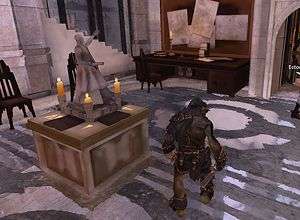 Graphically, Master of Shadows is a tough one to get to grips with. It’s very obviously a modern game; the lighting and shadows are beautifully executed and the level of detail in the environments can be pretty stunning at times but there are also moments where it’s reminiscent of PS2-era imagery, with overly compressed textures and character animations that would even make the folk at Piranha Bytes shudder. At times, textures will vanish entirely and leave shaded objects behind in a very Mirror’s Edge-style minimalist look – not great – but after a few seconds of annoyance, they’d return to remind you that this wasn’t some futuristic Parkour-fest, even though the bouncing around from wall to wall did feel like it at times.
Graphically, Master of Shadows is a tough one to get to grips with. It’s very obviously a modern game; the lighting and shadows are beautifully executed and the level of detail in the environments can be pretty stunning at times but there are also moments where it’s reminiscent of PS2-era imagery, with overly compressed textures and character animations that would even make the folk at Piranha Bytes shudder. At times, textures will vanish entirely and leave shaded objects behind in a very Mirror’s Edge-style minimalist look – not great – but after a few seconds of annoyance, they’d return to remind you that this wasn’t some futuristic Parkour-fest, even though the bouncing around from wall to wall did feel like it at times.
If, like me, you’re a fan of Dr Frasier Crane’s life after he moved from Boston to Seattle, you may find it hard to get away from the fact that Saul Jephcott’s vocal portrayal of Styx sounds an awful lot like Martin Crane when one of his two boys have riled him up by liking mulberry silk socks over polyester. Regardless, the sarcastic and misanthropic attitude is peppered with enough humour to allow the Frasier veil to drop when a more tense tone is required, making for a pretty solid, if somewhat hokey, performance.
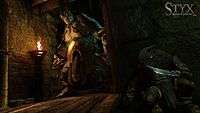 |
 |
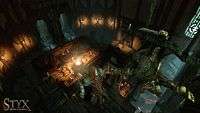 |
 |
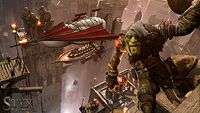 |
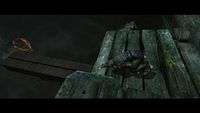 |
Ultimately, with only a few niggles here and there, the voyage into Akenash is certainly entertaining, if frustratingly tough at times. As far as stealth games go, getting to the point where you’re avoiding confrontation and opting for the more considered – and time consuming – approach makes for a much more rewarding playthrough than one involving frequent face-offs. With around forty hours required for a solid playthrough, without sweeping up all collectibles, Styx: Master of Shadows is certainly great value for money and doesn’t disappoint.
Pros- Tough enough to make you want to beat it
- Interesting story with many twists and turns
- Looks stunning in places
- Played properly, it can really make you think about your strategy
- Ridiculously open environment allowing for several ways to achieve each goal
- Stealth mechanic works well
- What combat exists is poorly executed
- Time challenges are a tad optimistic for the completionist
- Texture popping can be distracting in certain areas
As a fan of keeping my distance when it comes to getting through task-oriented gameplay, it's easy to fall into stealth mode even when the developer hasn't actually gone out of their way to provide one. Cyanide Studio, thankfully, clearly sat down and thought about the best way to approach the stealth aspect and have made a stellar job of it. From beginning to end, Master of Shadows taxes you and never stoops to the point where you're spoon fed anything, no matter how small. In a time when most developers appear to go out of their way to make gameplay as simple and pedestrian as possible, this is a very welcome change and makes for some pretty quick-save-heavy moments.
If you're looking for a walk in the park with sporadic face-offs, Master of Shadows is definitely not for you. It's a glorious rooftop/crawlspace/shadows-based rollercoaster with more than a hint of sarcasm thrown in for good measure and, despite its difficulty, I feel compelled to play through it until I max every in-game challenge and achievement, and I don't imagine it'll get boring.
Last five articles by Mark R
- From Acorns to Fish
- Alone In The Dark
- Why Borderlands is Better Than Borderlands 2
- Falling Short
- The Division: A Guide to Surviving the Dark Zone Solo



















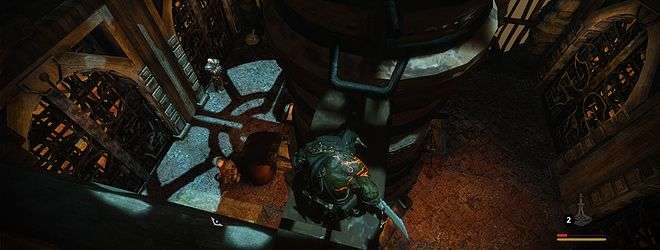
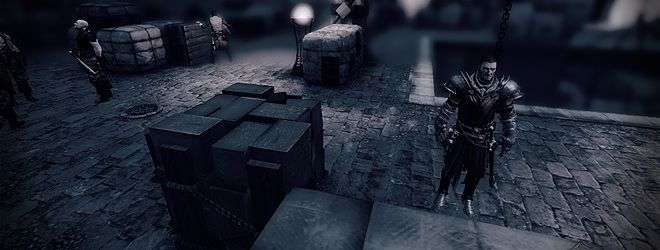






There are no comments, yet.
Why don’t you be the first? Come on, you know you want to!